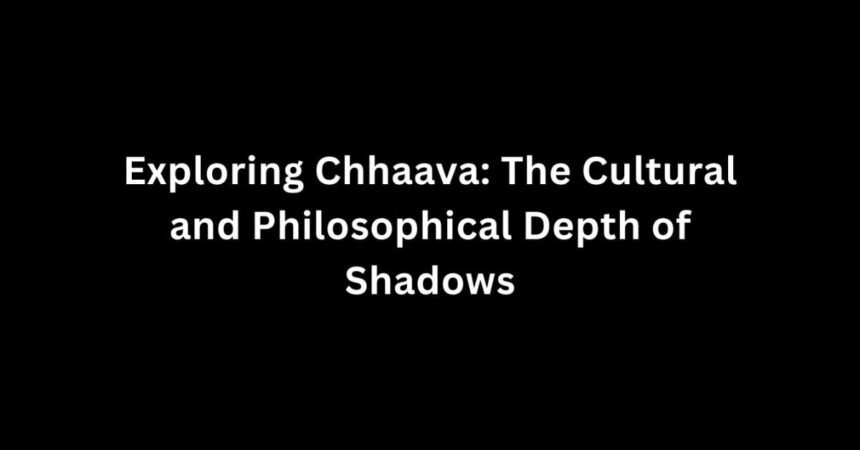Welcome to our comprehensive guide on Chhaava, an intriguing subject that encompasses a rich cultural heritage, deep philosophical underpinnings, and intricate symbolism. Chhaava, which translates to “shadow” in multiple languages, is more than just a word; it signifies a legacy linked to stories, beliefs, and practices that have traversed generations. In this article, we will delve into various dimensions of Chhaava, covering its cultural significance, artistic representations, philosophical interpretations, and its impact on contemporary society. Join us as we explore the essence of Chhaava in great detail.
The Cultural Significance of Chhaava
Chhaava holds profound cultural importance across different societies. Its implications extend from everyday life to the realms of art and spirituality. Understanding its roots is crucial to appreciating its ongoing relevance in modern cultural landscapes.
Historical Context
The term Chhaava can be traced back through various cultural narratives. In many traditions, shadows are seen as protective entities, often manifesting the interplay between light and darkness. For instance, in ancient folklore, shadows are sometimes portrayed as guardians of secrets, a theme that frequently resonates in mythological stories.
Chhaava in Art and Literature
Various art forms encapsulate the notion of Chhaava. Artists and writers have often drawn inspiration from the concept to depict the juxtaposition of existence, individuality, and collective memory. Shadows play a crucial role in visual arts, symbolizing the depth of human experience. Similarly, in literature, the motif of shadows frequently serves as a metaphor for the characters’ inner conflicts or societal issues.
Chhaava in Traditions and Rituals
Chhaava also finds its place in numerous cultural rituals and traditions. For example:
- Festivals: During various festivals, the concept of shadows becomes significant, often linked with traditional storytelling.
- Ritual practices: Many rituals emphasize the significance of shadows in understanding the cycle of life and death.
- Cultural ceremonies: Shadows can symbolize the presence of ancestors, suggesting that they watch over the living.
Philosophical Interpretations of Chhaava
The philosophical dimensions of Chhaava delve into existential questions and ethical considerations. Shadows have often been regarded as representations of the duality of existence—light and dark, good and evil, knowledge and ignorance.
Existential Themes
In existential philosophy, shadows can symbolize the unknown and the parts of ourselves that we may choose to hide. The notion that we all possess a shadow side—characteristics we may be reluctant to acknowledge—sparks interesting discussion in philosophical circles. This dichotomy can serve as a valuable lens for personal growth, encouraging individuals to confront and integrate their full selves.
Ethical Dimensions
The ethical implications of Chhaava also merit exploration. Shadows can symbolize moral ambiguities. For example, a character whose actions cast a long shadow might raise questions about accountability and redemption. The discussions around ethics can become richer with the metaphor of shadows, prompting deeper reflection on integrity and authenticity.
Chhaava in Contemporary Society
In today’s world, Chhaava continues to resonate, influencing various fields such as psychology, sociology, and even environmental studies. Its metaphorical implications extend to understanding human relationships and societal structures.
Chhaava and Psychology
In psychology, the concept of the ‘shadow self’—coined by Carl Jung—parallels the traditional understanding of Chhaava. Jung posited that in order to attain personal wholeness, individuals must confront their shadow selves, recognizing and integrating aspects of their personality that they might typically ignore. This psychological process is crucial for personal development and enhancing one’s emotional well-being.
Chhaava and Social Dynamics
On a sociological level, Chhaava serves to illustrate societal norms and expectations. The presence of shadows can signify the invisibility of marginalized communities. This metaphor highlights how certain voices and stories remain unheard, urging society to acknowledge and uplift these narratives.
Chhaava in Popular Culture
Chhaava’s influence permeates various aspects of popular culture, including films, music, and fashion. The thematic use of shadows creates powerful imagery and evokes deep emotional responses. Recognizing these representations allows for a greater appreciation of the complexities embedded in modern storytelling.
Film and Television
Numerous films utilize shadows to evoke certain moods or symbolize the inner conflicts of characters. Directors often employ lighting techniques that play with shadows to deepen the narrative. Popular films might include a storyline where the protagonist must confront their shadow or past, mirroring real-life struggles.
Music and Lyrics
Musicians often refer to Chhaava as a metaphor for heartache, longing, or nostalgia. Lyrics can poignantly evoke feelings associated with shadows, leading to resonant connections with listeners. This theme, where shadows represent lost love or hidden pain, is prevalent in various genres, emphasizing the universal nature of the experience.
Embracing the Concept of Chhaava
To embrace Chhaava means to acknowledge not only the beauty of light but also the significance of its counterpart, shadows. Acceptance involves recognizing that our shadows are an essential part of our identities. By integrating the lessons of Chhaava into our lives, we can promote self-awareness and cultivate empathy for others.
Practical Applications
- Self-reflection: Engage in regular reflection to understand your shadow aspects and gain deeper insight into your personality.
- Empathy cultivation: Recognize the shadows in others, fostering a culture of understanding and support.
- Artistic expression: Use creative outlets to explore the dynamics of shadow and light, allowing for emotional release and growth.
Conclusion
In conclusion, Chhaava is a multifaceted concept that spans historical, philosophical, and contemporary contexts. From its rich cultural significance to its psychological implications, understanding Chhaava allows us to appreciate the complex interplay between light and dark in our lives. We encourage readers to explore the theme of shadows in their lives, fostering self-awareness while also becoming active participants in their communities.
If you enjoyed this exploration of Chhaava, feel free to leave a comment below, share this post on social media, or check out our related articles for more insights. Remember, embracing our shadows can lead to greater understanding and connection with ourselves and the world around us.
For further reading, check these resources:
